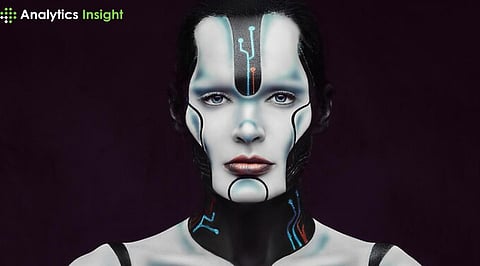

We have entered a new era of robotics where robots can have facial expressions and feel emotions as well. Robots can make your day-to-day tasks more accessible and now they can understand your feelings and reciprocate in the form of facial expressions.
This definitely proves that we are experiencing a new era in robotics and have a better future in robotics and robotic technology.
In a factory in the seaside city of Dalian in northeastern China, there are Chinese Robots businesses where ‘ex-Robots’ is creating robots that resemble humans. Their objective is to improve the Chinese robots' capacity to display emotions and facial expressions.
Robotic limbs, feet, and heads are strewn all over the factory. Silicone is a pliable, flexible material used to make these pieces. Additionally, there are neighboring human-like Chinese robots that are in the different stages of building.
The CEO of ex-Robots , Li Boyang states, "We have our own software and algorithm teams." Computer programs adhere to algorithms, which are directives or guidelines. To function, robots require theses algorithms.
"Everyone uses a lot of basic models and algorithms that are commonly available as open source," Li stated. Software developers can typically use open-source programming for free in their systems.
However, according to Li, the main focus of his company's work is on teaching artificial intelligence (AI) "to recognize and express expressions and emotions."
During a demonstration, for instance, an employee of Ex-Robots made head movements, grinned, and protruded her tongue. Her movements were then mimicked by a humanoid robot that has tiny motors positioned throughout its head.
"We are also working on the foundation model," Li stated. Our model is multimodal and has the ability to express emotions.
Several modes AI is capable of processing various signal types and responding to them. A multi-modal system, for instance, could respond to touch, sound, text, or video. Li continued by saying that it can analyze the surroundings and generate accurate facial feedback.
A humanoid robot can be created in two weeks to a month, according to Ex-Robots. The price range for the Chinese robots is $207,000–276,000.
The robots' primary function to date has been exhibition at museums. The Ex-Robots factory and one of the museums are housed in the same structure.
Li thinks the education and healthcare sectors will see a greater use of human-like robots in the future.
He stated that future applications for these robots will include psychiatric counseling and other mental health therapies. He continued by saying that his organization is now gathering data and exploring treatments for mental health issues.
Li continued, "Moreover, I believe that emotional interaction has broader applications in service fields, such as those aimed at children."
The above-mentioned robots sound lifelike, here are details of how they were created. The technology can be broken down as follows:
Motors and Mechanics: Small motors are implanted in the head of the robot. Facial features such as the movement of the eyes and mouth to express emotions are all controlled by the motors.
Materials: Silicone is the material used to provide the texture of human-like skin.
Open-Source Base: Most of the basic functions are derived from already existing, freely source-available software and algorithms.
1. Analyze the facial expressions and emotions of humans
2. Expressions on the robot's side with its motors to match them
3. In essence, all this means that robots do not feel emotions. They imitate human expressions based on what is programmed into them.
Machine Learning: Training of algorithms on a huge amounts of data to identify human emotions through facial expressions.
Robotics: Sophisticated robotics that enables the precise control of motors to replicate face movements similar to humans.
Artificial Intelligence: AI takes information received by sensors and software to process and conclude what would be an appropriate reaction.
Ex-Robots robots are a leap ahead in human-robot interaction, offering a much more interactive and engaging experience. However, it should be kept in mind that these robots are very advanced machines and not emotional beings.
Most importantly, the potential of these robots in education, health, and service industries seems immense. They could turn into companions, and support people, although the effectiveness of emotional interaction for mental health applications is still left to be explored.
